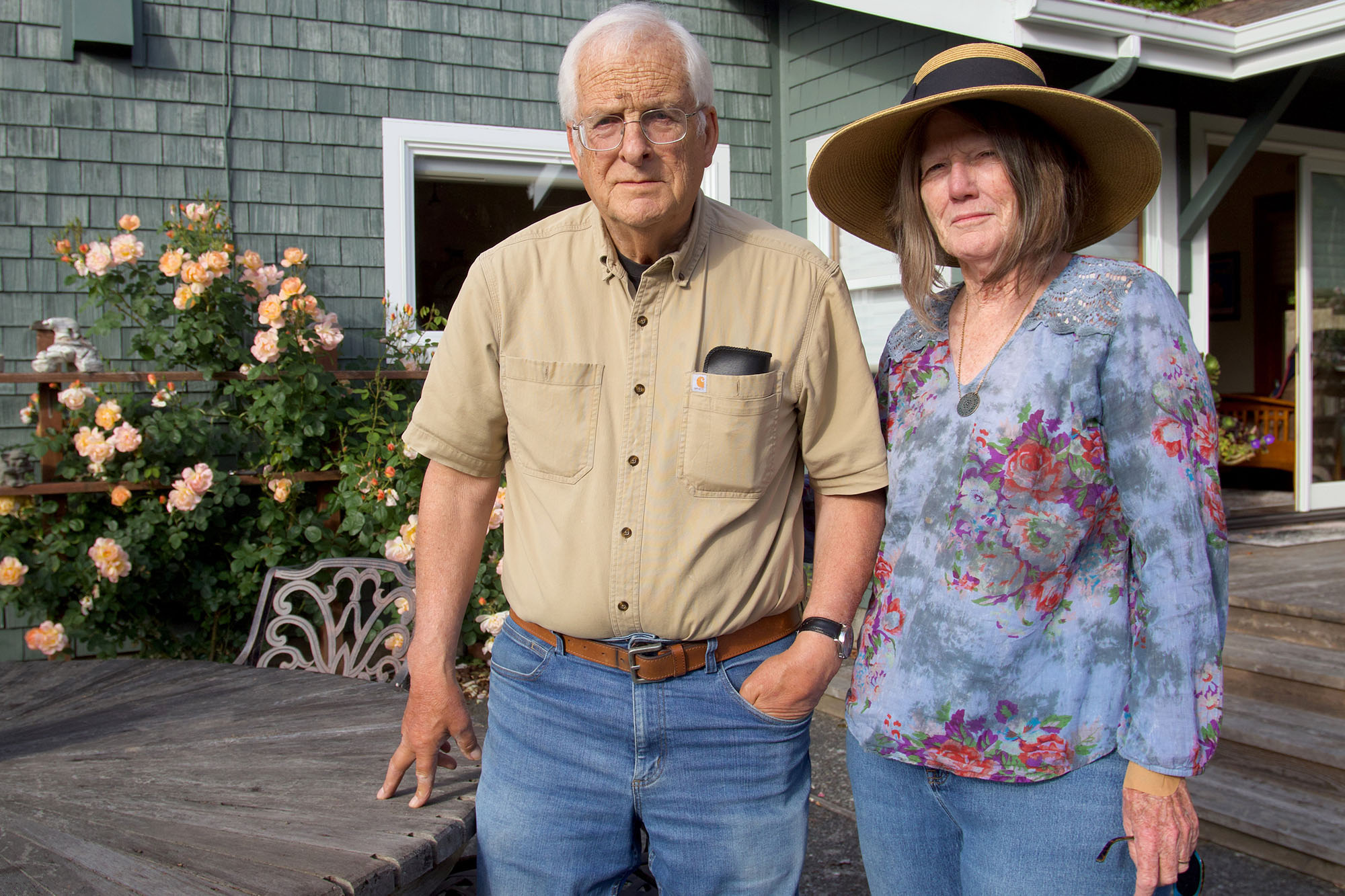

This is the second in a series of articles that will explore the different ways safety-net organizations are listening to their consumers and using their feedback to improve the design and delivery of care. CHCF believes that systems are more effective when they incorporate the perspectives of the people they serve. Learn more about CHCF’s own listening research and other related projects.
Across the country, a growing number of hospitals are offering spiritual care services to patients and families. At some medical centers, patients can request a visit from a chaplain, join a multifaith ceremony in the hospital chapel, or receive a referral to faith-based community organizations. But only one hospital in the US facilitates patient requests for visits from a Hmong shaman, or txiv neeb — a traditional spiritual healer who can perform nine healing ceremonies approved by the hospital right in the patient’s room.
At Mercy Medical Center (a Dignity Health hospital) in Merced, California, the nation’s only hospital-based Hmong shaman certification program bridges Eastern and Western medicine to meet immigrants’ health needs. The program was created to provide culturally and linguistically competent care for Merced’s Hmong population. Any patient at Mercy can request these shaman services.
Merced County in California’s Central Valley is home to 275,000 residents, including about 5,700 Hmong, an ethnic group from Laos recruited by the CIA during the Vietnam War to fight alongside US troops in Southeast Asia. After Laos fell to the communists in 1975, tens of thousands of Hmong civilians were declared enemies of the state by the new government. Those civilians fled to Thailand, where they stayed in overcrowded refugee camps until American human rights activists pressured the US government to create a resettlement program for the Hmong.
After a War, a New Home
In 1977, Dang Moua, a Hmong clan leader who had been resettled in Richmond, Virginia, moved his family to Merced, where the warm climate and fertile agricultural land reminded him of Laos. By 1983, Merced’s growing Hmong population was making national news. A New York Times article foreshadowed the health care access issues that the immigrants would face for decades to come. It quoted Bev Morse, then Merced County’s coordinator for refugee services, who said the Hmong “are just not used to Western health care. They have to overcome a lot of fears and lack of knowledge.” For Hmong refugees, most of whom spoke no English, the American health care system seemed convoluted, alien, and cold.
Many Hmong believe that the soul plays an integral role in health and sickness, and in life and death. Hmong tradition considers most illnesses to be the result of the soul becoming separated from the body because of an accident, a traumatic event, or theft by an angry spirit.
Shamans are revered in Hmong culture for communicating with the spiritual world to retrieve the soul of a person who is ailing. It isn’t easy to become a shaman, but then again, it isn’t really a choice. A person must be called to shamanism by signs from the spiritual world. Those so summoned are guided by their own spirit to enter trances, the prerequisite for visiting the other world. A master shaman helps them learn how to use shaman tools.
Mercy’s shaman certification program is the result of decades of misunderstanding and conflict between local health care providers and the Hmong community, followed by the hospital’s concerted effort to listen and learn. In her seminal 1997 book The Spirit Catches You and You Fall Down: A Hmong Child, Her American Doctors, and the Collision of Two Cultures, author Anne Fadiman chronicled the life of Lia Lee, born in 1982 to Hmong refugees living in Merced. Lee had severe epilepsy and became the poster child for the cultural and linguistic barriers faced by Hmong families trying to navigate the American health care system.
Skepticism About Western Medicine
The hospital, then known as Merced Community Medical Center, was not equipped to communicate or empathize with Lee’s parents. They spoke no English and were deeply skeptical and afraid of Western medicine. They found it nearly impossible to keep appointments and follow complex prescription schedules written in English.

Before the book was published, community efforts to bridge the gap between the Hmong community and the health care system in Merced were underway. Marilyn Mochel, a county nurse who provided care to refugees, has long been instrumental in these efforts.
About 20 years ago, a Hmong clan leader in Merced was hospitalized at Mercy because of a gangrenous bowel that required surgery. Doctors concluded he had almost no chance of survival. Hmong clan leaders and family members flooded the hospital to pay their respects, and Mochel was called in to assist.
“There were probably about 75 people outside of the intensive care unit,” Mochel said. “His family wanted to do a Hmong traditional healing ceremony. That was just unheard of in the hospital.”
Mochel negotiated with management to allow a shaman to perform ceremonies in the room of the comatose patient, who was receiving dialysis and was on a ventilator. During the first rites, the patient stunned everyone by opening his eyes. He eventually made a miraculous recovery. The experience cemented the Hmong community’s trust in Mochel, and she leveraged it to build a cultural bridge between the community and the hospital.
Hospital Training for Shamans
Mochel worked with local health care providers and the Hmong community to develop a 40-hour certification program for shamans that orients them to Western medicine and allows them to perform nine different ceremonies at the hospital. Hmong shamans attend weekly classes led by Palee Moua, a contract language and cultural specialist at Mercy and wife of Dang Moua, or by a guest lecturer.
Nancy Xiong is a Hmong-American pharmacist at Mercy who teaches the shamans about germ theory, vaccines, and prescription drugs. She called it an honor to be involved in the program because shamans are highly esteemed by the Hmong community.
The certification program was originally supported financially by The California Endowment, but today Mercy operates and funds it. The program was adopted as one of the hospital’s formal policies.
Janice Wilkerson, mission integration director at Mercy, said, “We understand that different cultures have different beliefs, and sometimes when it comes to healing, you have to reach out to those different beliefs. . . . We really do look at the whole person.”
Some of those traditional Hmong beliefs include aiding healing by tying a white string around a patient’s wrist to protect the soul, Nancy Xiong said. Tying a red string strengthens the patient’s body. If a patient is critically ill, both color strings are tied around a wrist or the patient’s neck.
Badge of Honor
Before the shaman policy was implemented in the hospital, doctors would clash with patients and their families over the string-tying ceremonies — especially when the string was tied around the patient’s neck. “They said, ‘Fine, you can put on this string, but we’re going to cut it in surgery,’” Mochel said. “It’s like, oh my God, you can’t cut it in the surgery. The family, the patients will believe they’re going to die.”
Wilkerson estimates that the program trained more than 150 Hmong shamans. Shamans travel from Fresno, Sacramento, Ukiah, and Yuba City to attend the classes. At graduation, the hospital presents each with a certificate, a hospital badge, and a graduation gift.

Hmong shaman Xia Thao is grateful for the program. “After the class, I feel more comfortable doing what I’m doing,” she said through an interpreter. “I became somebody, and I can go help at the hospital.” Still, she hopes more hospitals will become “open-minded and welcome us as their partners to heal patients.”
A Mercy certification gives shamans validation from more than just the hospital. “One Hmong shaman said the greatest gift we gave them was the attention that they received from English-speaking professionals within their families,” Mochel said. Younger Hmong who have acculturated to the US tend to seek Western health care, so seeing shamans being integrated into that system reinforces traditional Hmong values and the deep respect bestowed on shamans.
Merced native Michelle Xiong, a second-generation Hmong-American, said, “When we ask for a shaman to come do a ceremony for us [at home], they bring their badge because Dignity Health gives them a business badge with their name on it. And I think it’s a very proud moment [for them]. They place it on the altar.”
Combining Healing with Referrals
Most shamanistic interventions do not end with a miraculous recovery. But the shaman program alumni “are instrumental in getting the patients to seek out care,” said Wilkerson. Because the curriculum helps shamans better understand diseases and Western medicine, they leave equipped to give their patients and community members better health advice.
For example, there is no Hmong word for diabetes. The closest equivalent translates to “sweet blood” in English. If a Hmong patient seeks shamanistic healing for symptoms of diabetes, a shaman trained through Mercy might redirect that person to a Western physician for diagnosis and treatment.
“The shamans are the gatekeepers — they can just go to the community and open doors” to the Western medical system, said Palee Moua.
Beyond the cultural benefits of having the shaman program, “there is a savings benefit — patients getting preventive treatment instead of costlier treatment in the advanced stage,” said Wilkerson.
Listening to the Hmong
The shaman certification program has received the most attention, but it is not the only local effort to build bridges between the Hmong community and the local health care system.
The Merced County Department of Public Health prioritized community engagement with the county’s diverse populations when conducting its 2016 Community Health Assessment (PDF). The department worked with Palee Moua to host a well-attended focus group facilitated in Hmong and later translated into English.
From 2000 to 2013, Palee Moua and Mochel ran a program that trained bilingual health care workers to interpret English medical terminology for Hmong patients. It was a difficult feat — the Hmong language lacks terminology for many conditions other than diabetes — for example, heart disease, schizophrenia, and bipolar disorder. And the cultural differences between Eastern and Western medicine can make language gaps feel even larger.
Michelle Xiong interprets for her mother, who speaks no English and has weekly dialysis treatments. She often feels the need to tone down the clinical language that providers use. “I’m not going to lie, sometimes I have to say it nicer than them to my mom,” she said. “I don’t think [American doctors] see themselves as healers. I think they see themselves as doctors so they can diagnose and [treat] you. But . . . they don’t necessarily make you feel better.”
As the Hmong community’s roots in Merced continue to deepen, the local health care workforce can reflect the diverse local population. “Hire Hmong people,” Michelle Xiong said. “Let them lead.”
Authors & Contributors






